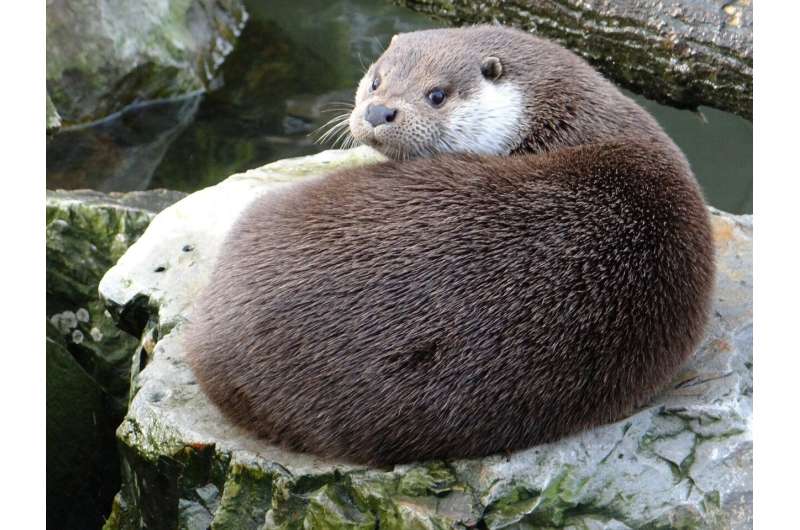This article has been reviewed according to Science X's editorial process and policies. Editors have highlighted the following attributes while ensuring the content's credibility:
fact-checked
peer-reviewed publication
trusted source
proofread
New research reveals forgotten lives of Eurasian otters in Hong Kong

Researchers have gained new insights into the lives and losses of Eurasian otters in Hong Kong, as detailed in a paper published in the journal Oryx.
Hong Kong is one of the world's busiest metropolises, and the Eurasian otter Lutra lutra is among its most threatened wildlife. Dependence on lowland wetlands makes it particularly susceptible to human disturbance. Moreover, the low-lying region within Hong Kong where most otters can be found has been earmarked for a government-led mega development plan.
By analyzing a 131-year longitudinal dataset, the study provides the first long-term longitudinal overview of the distribution and abundance of the Eurasian otter in Hong Kong, revealing that the species was much more widespread and common in historical times.
The study's findings show a drastic reduction in the range and abundance of Eurasian otters in Hong Kong between 1890 and 2020, and indicate that Hong Kong's Deep Bay wetlands have always been the critical habitat for the local otter population—insights that have significant implications for conservation efforts.
Although the Eurasian otter has the widest distribution of all extant otter species, with a range stretching across Europe, Asia and North Africa, it is generally considered rare in Asia, and the future of these eastern populations is not secure. Moreover, despite the species' threatened status in Asia, little research has been conducted on its ecology and the threats it faces in the region.
The researchers found that the decline in otter populations began as early as the 1930s, with their analysis suggesting that this decline was owed primarily to the otter's dependence on lowland wetlands, making it particularly susceptible to urbanization. Auxiliary infrastructures and water pollution in Hong Kong have exacerbated wetland degradation, to the detriment of otters and their prey.
Among the 70 records analyzed that contained specific locations, 56 (80%) were clustered in the Yuen Long floodplain drained by the Deep Bay catchment. The records span the 1900s to 2019, suggesting this habitat is critical to the survival of Eurasian otters in Hong Kong.
To gather data on the Eurasian otter population in Hong Kong over time, the researchers systematically reviewed and collated all otter records in scientific publications, books, local newspapers and other popular publications from 1890 to 2020. A total of 14,231 otter-related newspaper articles were examined. Historical data sources such as newspapers, archival documents and traditional and local ecological knowledge are increasingly used as an alternative approach for assessing species population trends and ecosystem changes when conventional ecological data are lacking.
Researcher Michael Ka Yiu Hui explains that this study offers valuable insights into where and how otters have historically occurred in Hong Kong.
"The otter is a resilient species and can live in human-dominated landscapes, provided that healthy riverine or coastal ecosystems are available," says Hui.
"Urbanization leads to the direct loss of otter habitat, and the extensive river channelization scheme and pollution problem appear to be the major drivers of local otter decline. The plight of the local Eurasian otter needs to be widely publicized to garner public and government support and galvanize immediate conservation efforts across society."
Co-author Bosco Pui Lok Chan emphasized that insights from this study are crucial for improving the management of the small otter population and the aquatic ecosystems of Hong Kong.
"Conservation action is particularly crucial with the looming Northern Metropolis mega development plan recently released by the Hong Kong government, which will drastically change the rural landscape of the ecologically invaluable Yuen Long floodplain. A holistic nature-positive land-use plan must be designed to balance economic development and nature conservation, and ecologically sensitive areas must be preserved," says Chan.
More information: Hui, M. K. Y. et al, Analysis of a 131-year longitudinal dataset of the Eurasian otter Lutra lutra in Hong Kong: implications for conservation, Oryx (2023). DOI: 10.1017/S0030605323001163
Journal information: Oryx
Provided by Cambridge University Press



















